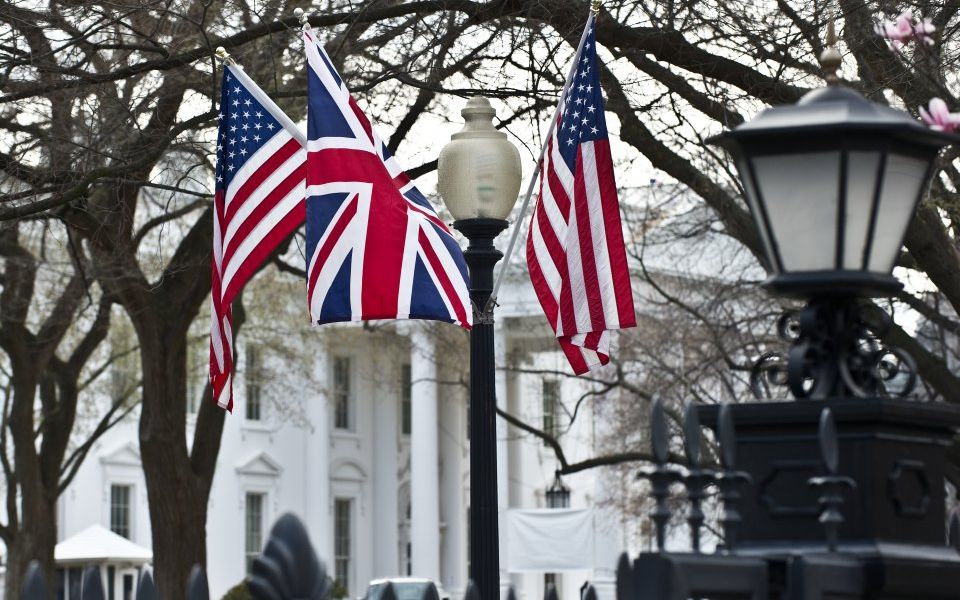Britain and the US can show the world what a free trade deal should like

Now might seem an odd time to be considering new free trade deals with the US, when President Donald Trump has just escalated his trade war with China by imposing new tariffs on $200bn worth of goods.
The UK, meanwhile, is still focused on resolving the uncertainty surrounding its future trading relationship with the EU. Talking seriously about a possible UK-US free trade agreement may feel a bit premature.
Yet that is precisely what policy experts from 11 think tanks on both sides of the Atlantic have been busy debating this year.
Read more: UK and US should have mutual recognition of financial sectors, says report
The culmination of that effort is a paper entitled “The Ideal US-UK Free Trade Agreement: A Free Trader’s Perspective”, published on Tuesday by the Initiative for Free Trade in London and the Cato Institute in Washington.
This in-depth report includes the draft legal text, summaries, and explanations of what the authors consider provisions worthy of the model free trade agreement.
Free trade is about the freedom of people to transact as they wish, with whom they wish, and without politicians and bureaucrats as gatekeepers. Therefore, genuine free traders tend to be sceptical of agreements, which are usually more about managed trade than free trade.
Rather than liberalise the rules and provide consumers with greater choices, trade agreements too often contain provisions that protect incumbents from challengers by locking in existing advantages, requiring long tariff phase-out periods, and limiting competition in industries through rules that masquerade as serving prudential or socially desirable purposes.
Too often, the terms are pro-business, pro-labour, or pro-special interest, when they should be pro-market.
The prospect of a bilateral UK-US agreement affords two of the world’s largest economies – both traditionally committed to the institutions of free-market capitalism and the rule of law – the opportunity to break new ground and pioneer the rules of a genuinely liberalising, modern trade agreement.
By removing tariffs and significantly reducing behind the border barriers that inhibit market integration, such a model will have a transformative effect, on both economies and beyond.
With some limited exceptions, the final model for an ideal agreement calls for: zero tariffs on all goods; zero non-tariff trade barriers; zero restrictions on competition for government procurement and on foreign direct investment; rules to make mutual recognition of potentially protectionist product standards and regulations more feasible; prohibitions against the use of anti-dumping measures; and prohibitions against restrictions based on scientifically unsubstantiated public health and safety concerns and national security concerns that do not meet certain minimum standards.
Despite the current uncertainty in both the UK and US policy environments, now is the ideal time to be giving serious thought to a bilateral free trade agreement. In six months, the UK will have repatriated its trade policy decision-making. Striking smart, new trade agreements will be crucial for Britain to maximise economic opportunities post-Brexit.
Meanwhile, before the year’s end, the Trump administration is likely to wrap up its trade renegotiations with South Korea, Canada, and Mexico, clearing the decks for a shift in focus to new, bilateral free trade agreements.
The US ambassador to Britain noted last week that Trump has a “robust appetite” for a bilateral trade deal with the UK, which suggests that commencing negotiations in late March 2019 may very well be within the realm of possibilities.
It is difficult to imagine two countries that are better suited for a state-of-the-art, comprehensive, truly liberalising trade agreement than Britain and the US. And now the substance of that agreement has already been written.
Governments, it’s over to you now.
Read more: Tech stocks hit as Trump mulls fresh $200bn tariffs on China